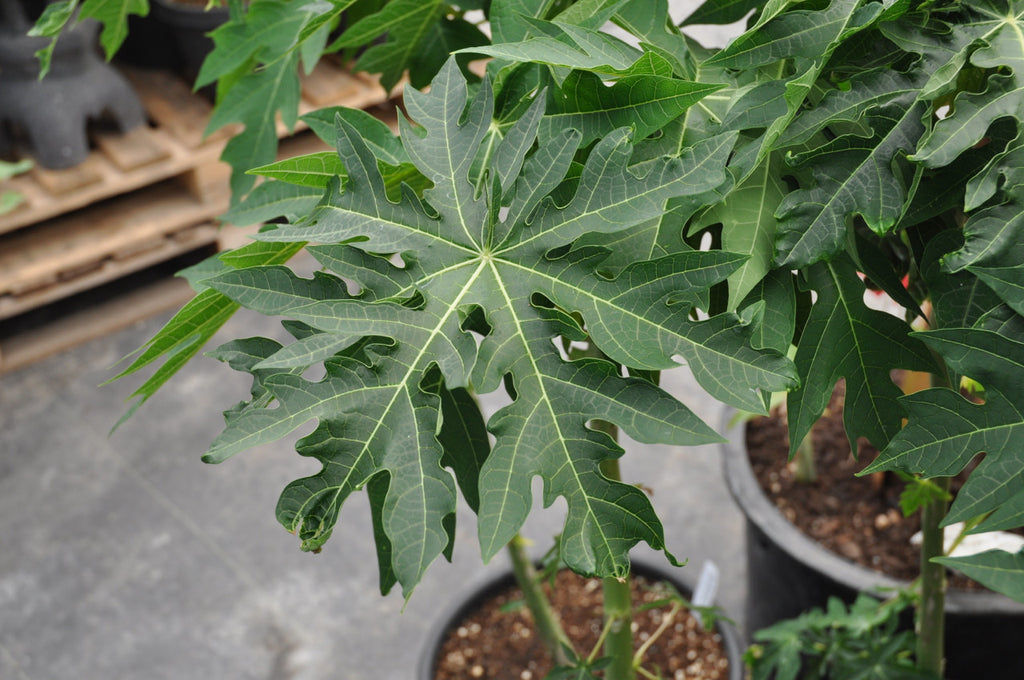Many gardeners are preparing to transition outdoor patio and tender garden plants into the house for winter. Everything from herbs to hibiscus to haworthias are getting re-potted and re-positioned for the move. Some of these plants are just good-looking and make for attractive decor while many others are purposeful with fragrance and flavour. And let's not forget those plants that are just rare or cherished, so worth keeping year to year.
Whatever the intentions, there are a few basic rules of thumb when it comes to successfully moving plants indoors. Here are 7 easy things to keep in mind when setting plants up for winter:
1) Timing makes a big difference. Cool night temperatures initiate metabolic slow-down for plants so it is very helpful to bring them indoors early. Ideally most plants would be repotted and ready to move by early September. If you have not yet done so... now is the time to get your patio plants indoors.
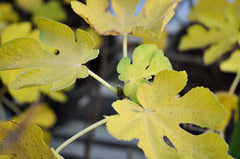 2) Some plants require a little dormancy. Although most houseplants do not take a big rest for winter some popular selections do. This includes figs, summer flowering bulbs, gingko (or can be grown outdoors) and a few other varieties that tend to be deciduous in spite of coming from warmer climates. Figs and Gingko require a little frost before coming inside - to ensure they enter into proper dormancy - while tropical bulbs (Amaryllis, Canna Lily, Calla Lily) should be allowed to have some cooler fall weather but be sheltered from actually frosts.
2) Some plants require a little dormancy. Although most houseplants do not take a big rest for winter some popular selections do. This includes figs, summer flowering bulbs, gingko (or can be grown outdoors) and a few other varieties that tend to be deciduous in spite of coming from warmer climates. Figs and Gingko require a little frost before coming inside - to ensure they enter into proper dormancy - while tropical bulbs (Amaryllis, Canna Lily, Calla Lily) should be allowed to have some cooler fall weather but be sheltered from actually frosts. 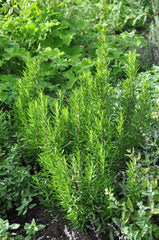 3) Plants coming from the garden need to settle into pots before moving inside. Houseplants or tender specimens (like Rosemary or Bay Laurel) often fail in the transition to indoors if they are abruptly moved from the garden to indoors.
3) Plants coming from the garden need to settle into pots before moving inside. Houseplants or tender specimens (like Rosemary or Bay Laurel) often fail in the transition to indoors if they are abruptly moved from the garden to indoors.
Plants should be allowed to settle at least one week in new pots before coming inside... all the more reason to get right to this project! 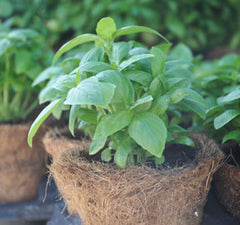 4) Summer annuals are not great candidates for wintering indoors. Alas some of our favourite herbs, veggies and flowers are truly summer-oriented annuals that will not co-operate for long if shuffled inside (even with the best of intentions!). These types of plants require - indeed must have - long days and strong light to flourish. Even in the brightest windows there are not enough hours of fall/winter daylight to support these types of plants and they also are often already in decline (due to shorter days) by the time September arrives. But there is one really easy way to make this category of plants happen through winter: start fresh from seed under inexpensive T5 full spectrum grow lights.
4) Summer annuals are not great candidates for wintering indoors. Alas some of our favourite herbs, veggies and flowers are truly summer-oriented annuals that will not co-operate for long if shuffled inside (even with the best of intentions!). These types of plants require - indeed must have - long days and strong light to flourish. Even in the brightest windows there are not enough hours of fall/winter daylight to support these types of plants and they also are often already in decline (due to shorter days) by the time September arrives. But there is one really easy way to make this category of plants happen through winter: start fresh from seed under inexpensive T5 full spectrum grow lights. 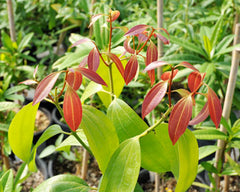 5) The higher the gardening zone the better the houseplant. While annuals are not easy to bring indoors warm zone perennials are often excellent options for wintering indoors. At Sage Garden we try hard to provide comprehensive zone info for all of our plant selections - just use the search feature on our website to look-up plants and you will find zone + variety-specific indoor growing tips. By contrast lower zone varieties, particularly zone 5 and bellow, are not great options for indoors as these plants require a long cold period and winter dormancy (a good example would be French Tarragon... I am always amazed to see this included on "Top Herbs To Grow Indoors" lists all over the internet!).
5) The higher the gardening zone the better the houseplant. While annuals are not easy to bring indoors warm zone perennials are often excellent options for wintering indoors. At Sage Garden we try hard to provide comprehensive zone info for all of our plant selections - just use the search feature on our website to look-up plants and you will find zone + variety-specific indoor growing tips. By contrast lower zone varieties, particularly zone 5 and bellow, are not great options for indoors as these plants require a long cold period and winter dormancy (a good example would be French Tarragon... I am always amazed to see this included on "Top Herbs To Grow Indoors" lists all over the internet!). 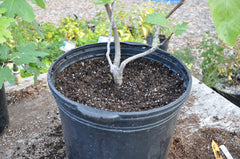 6) Repot or top dress. September is an excellent time to repot patio plants. Repotting helps maintain root health (the foundation of healthy plants!) and stimulates new top growth that will only have known indoors. For tropical plants we use straight Sea Soil for repotting while selections that require the most drainage (Mediterranean herbs, for example) we blend about 30% Sea Soil with Black Gold Organic potting soil.
6) Repot or top dress. September is an excellent time to repot patio plants. Repotting helps maintain root health (the foundation of healthy plants!) and stimulates new top growth that will only have known indoors. For tropical plants we use straight Sea Soil for repotting while selections that require the most drainage (Mediterranean herbs, for example) we blend about 30% Sea Soil with Black Gold Organic potting soil. 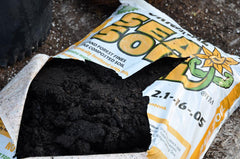 Top dressing is simply adding compost, for example Sea Soil or worm castings, to the top of the soil in potted plants. This adds lots of nutrients and beneficial micro organisms to the soil. Top dressing is a great idea where repotting is not desirable (pots already too large!).
Top dressing is simply adding compost, for example Sea Soil or worm castings, to the top of the soil in potted plants. This adds lots of nutrients and beneficial micro organisms to the soil. Top dressing is a great idea where repotting is not desirable (pots already too large!).
7) Pest control. Concern about bringing pests indoors is likely the #1 issue that holds gardeners back from enjoying the process of wintering plants indoors. Fortunately there are some very easy steps to alleviate this worry.
Start by trimming back the stem tips of plants before moving inside (most pests occur on the undersides of top growth). Next, rinse plants down with fast flowing fresh water; focus on spraying the undersides and stem areas. This so simple but goes very far to remove potential pests! Finally, wipe down the inner and outer rim of the containers with hydrogen peroxide or 10% bleach/water solution. If there are any visible pests, Safer's End-All is the most effective yet safe-to-use insecticide currently registered for use on edible and ornamental plants; End-All kills egg, nymph and adult soft bodied pests.
At our garden centre we use a variety of additional pest control measures that are organic/eco-friendly and effective but unfortunately not currently available to home gardeners. This includes specialized beneficial insects and also a beneficial fungus called Beauveria; the fungus is really an amazing solution as it readily controls a wide variety of common pests while being very safe to use. All indoor plants grown at Sage are now treated preventively with Beauveria.
If you are looking for additional help with bringing plants indoors feel free to use our many locally-minded resources: check out our blog section on-line; check out the variety specific plant listings on our website (use the Plant Reference menu links or use the search); and of course feel free to drop by the garden centre!

